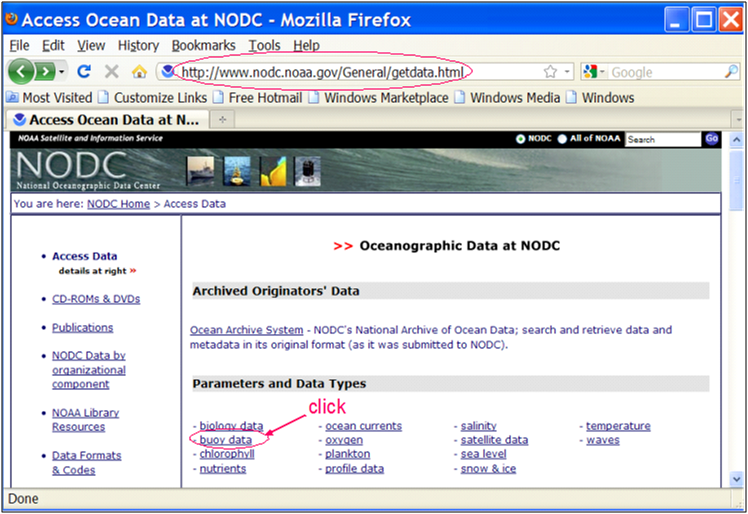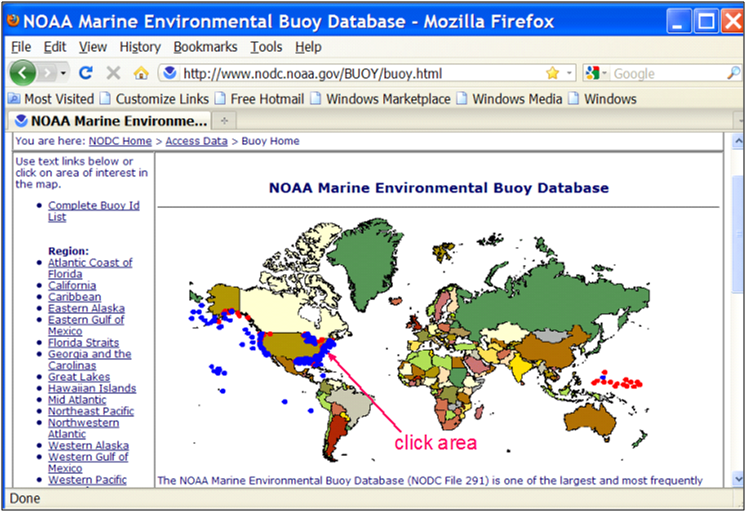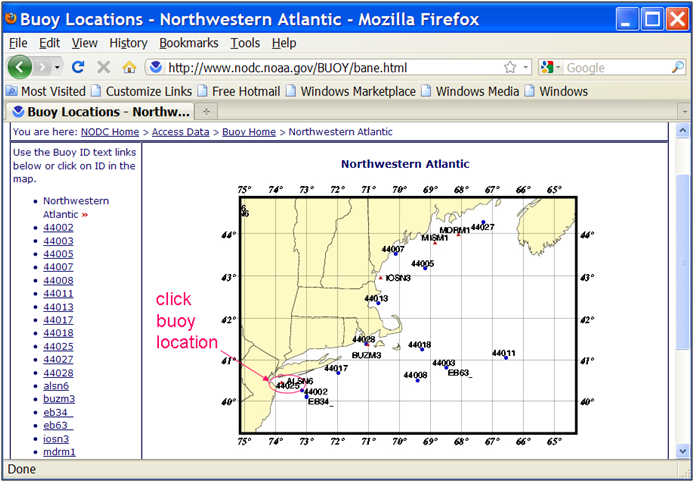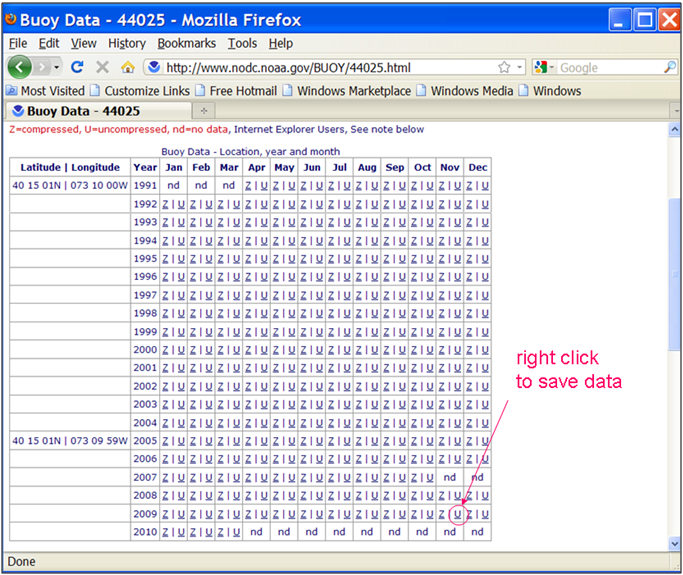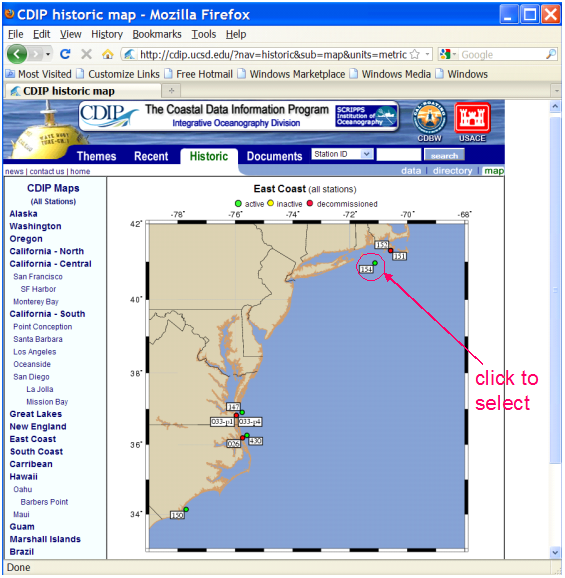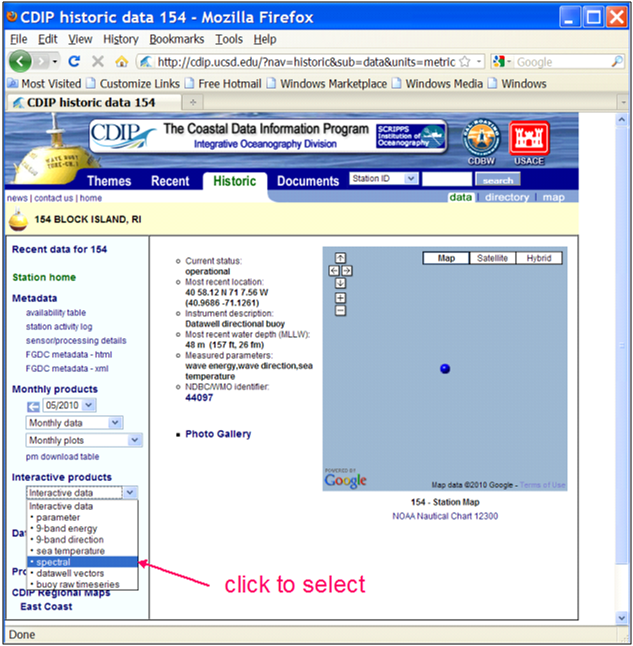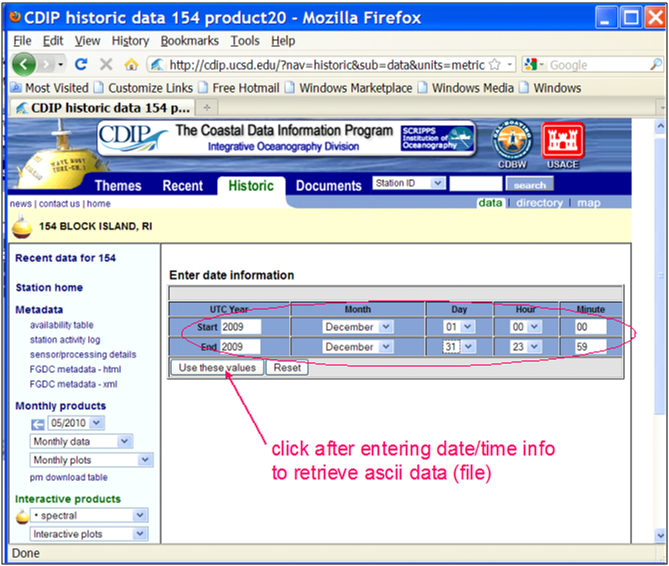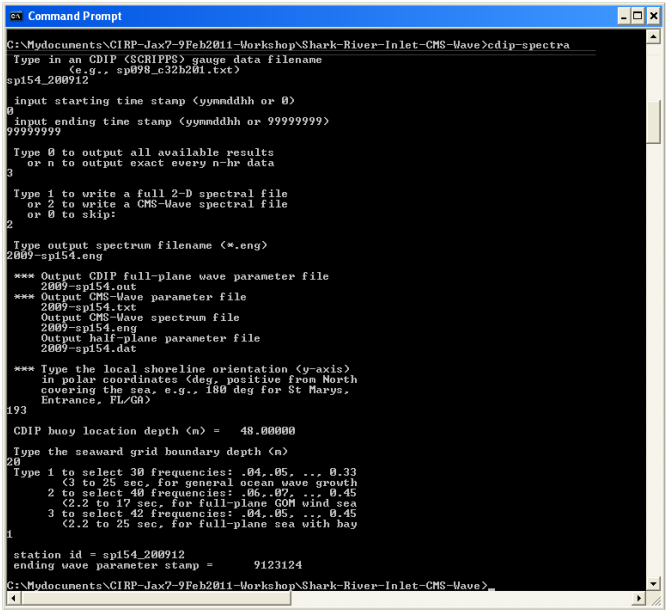User Guide 028: Difference between revisions
(Created page with "17 Appendix G: Inverse Distance Interpolation The inverse-distance interpolation also referred to as Shepard interpola-tion is given by (Shepard 1968) (17-1) where the inte...") |
No edit summary |
||
| (7 intermediate revisions by the same user not shown) | |||
| Line 1: | Line 1: | ||
17 Appendix G: Inverse Distance Interpolation | =17 Appendix G: Inverse Distance Interpolation= | ||
The inverse-distance interpolation also referred to as Shepard interpola-tion is given by (Shepard 1968) | The inverse-distance interpolation also referred to as Shepard interpola-tion is given by (Shepard 1968) | ||
{{Equation|<math>\phi(\overrightarrow{x}) = \sum_{i=1}^N w_i \phi_i</math>|17-1}} | |||
where the interpolation weights are given by | where the interpolation weights are given by | ||
where | {{Equation|<math>w_i = \frac{d_i ^{-\rho_s}}{ \sum_{j} d_j^{-\rho_s}}</math>|17-2}} | ||
where | |||
<math>\rho_s</math> = real and positive power parameter [-] | |||
d = distance between the known points <math>\overrightarrow{x_i}</math> and the unknown interpolation points <math>\overrightarrow{x}</math> equal to the Euclidean norm <math>d = ||\overrightarrow{x} - \overrightarrow{x}_i||</math> . | |||
In this interpolation, the weight of each point decreases with distance from the interpolated point. One advantage of the inverse-distance interpolation is the interpolation weights are independent of the interpolation function, and therefore only need to be calculated once and can be saved for computational efficiency. | In this interpolation, the weight of each point decreases with distance from the interpolated point. One advantage of the inverse-distance interpolation is the interpolation weights are independent of the interpolation function, and therefore only need to be calculated once and can be saved for computational efficiency. | ||
18 Appendix H: Providing Sea Buoy Data to CMS-Wave | =18 Appendix H: Providing Sea Buoy Data to CMS-Wave= | ||
Directional spectral data collected by NDBC or CDIP buoys can be pro-cessed as alternative source for wave input to CMS-Wave. Two examples are given below using CDIP 154 and NDBC 44025 standard spectral files for December 2009. | Directional spectral data collected by NDBC or CDIP buoys can be pro-cessed as alternative source for wave input to CMS-Wave. Two examples are given below using CDIP 154 and NDBC 44025 standard spectral files for December 2009. | ||
1. Download the NDBC standard monthly directional wave spectral file from | :• NDBC buoy data – run ndbc-spectra.exe (FORTRAN) to read the NDBC standard directional wave file and generate the CMS-Wave input spectral *.eng. | ||
::1. Download the NDBC standard monthly directional wave spectral file from | |||
http://www.nodc.noaa.gov/BUOY/buoy.html (e.g., 44025_200912) - see Figs 2.3.1 to 2.3.4 for accessing NDBC spectral data from the Web. | http://www.nodc.noaa.gov/BUOY/buoy.html (e.g., 44025_200912) - see Figs 2.3.1 to 2.3.4 for accessing NDBC spectral data from the Web. | ||
2. In the DOS window, run ndbc-spectra.exe | |||
3. Responding to the on-screen input, type the NDBC spectral filename | ::2. In the DOS window, run '''ndbc-spectra.exe''' | ||
4. Type the starting timestamp (default value is 0) for saving output files | |||
5. Type ending timestamp (default is 99999999) for saving output files | ::3. Responding to the on-screen input, type the NDBC spectral filename | ||
6. Type the time interval (hr) for saving output data | |||
7. Type 2 to save the CMS-Wave *.eng and *.txt files | ::4. Type the starting timestamp (default value is 0) for saving output files | ||
8. Type the CMS-Wave input spectrum filename (*.eng) | |||
9. Type the local shoreline orientation (the CMS-Wave grid y axis) in clockwise polar coordinates (deg, positive from North covering the sea, e.g., 180 deg for St Mary’s Entrance, FL/GA, or 360 deg - the wave grid orientation angle in *.sim) | ::5. Type ending timestamp (default is 99999999) for saving output files | ||
10. Type the NDBC buoy location water depth (m) and then the CMS-Wave seaward boundary mean water depth (m), e.g. Buoy 44025 has a nominal depth of 36.3 m relative to Mean Sea Level | |||
11. Type 1 to include wind or 0 to skip the wind input | ::6. Type the time interval (hr) for saving output data | ||
12. Type 1 or 2 or 3 for different choice of calculated frequency bins to complete the run – see Fig 2.3.5 for running ndbc-spectra.exe in DOS. | |||
::7. Type 2 to save the CMS-Wave *.eng and *.txt files | |||
::8. Type the CMS-Wave input spectrum filename (*.eng) | |||
::9. Type the local shoreline orientation (the CMS-Wave grid y axis) in clockwise polar coordinates (deg, positive from North covering the sea, e.g., 180 deg for St Mary’s Entrance, FL/GA, or 360 deg - the wave grid orientation angle in *.sim) | |||
::10. Type the NDBC buoy location water depth (m) and then the CMS-Wave seaward boundary mean water depth (m), e.g. Buoy 44025 has a nominal depth of 36.3 m relative to Mean Sea Level | |||
::11. Type 1 to include wind or 0 to skip the wind input information | |||
::12. Type 1 or 2 or 3 for different choice of calculated frequency bins to complete the run – see Fig 2.3.5 for running '''ndbc-spectra.exe''' in DOS. | |||
The output files include *.txt, *.eng, *.out (time series of wave parameters at the buoy), and *.dat (time series of shoreward wave parameters at the CMS-Wave offshore boundary). | The output files include *.txt, *.eng, *.out (time series of wave parameters at the buoy), and *.dat (time series of shoreward wave parameters at the CMS-Wave offshore boundary). | ||
[[File:fig_g-1.png]] | |||
Figure G-1. NODC buoy data access website. | |||
[[File:fig_g-2.png]] | |||
Figure G-2. NODC buoy data access world map. | |||
[[File:fig_g-3.png]] | |||
Figure G-3. NODC buoy data access regional map. | |||
[[File:fig_g-4.png]] | |||
Figure G-4. NDBC buoy spectral data download web page. | |||
[[File:fig_g-5.png]] | |||
Figure G-5. Run ndbc-spectra.exe in DOS | |||
:• CDIP buoy data - run '''cdip-spectra.exe''' (also FORTRAN code) to read the CDIP standard directional wave file and generate the CMS-Wave input *.eng file. Download the CDIP wave file from http://cdip.ucsd.edu/?nav=historic&sub=data (e.g., sp154-200912) – see Figure G-6 to Figure G-8. | |||
::Run '''cdip-spectra.exe''' in the DOS window similar to '''ndbc-spectra.exe''' – see Figure G-9. Because CDIP spectral file already contains the buoy location depth information, '''cdip-spectra.exe''' will not prompt for this depth input. For processing either NDBC or CDIP data, users shall check and manually fill any data gaps in *.eng and *.txt files (using the first available spectral data from the neighboring time interval). | |||
[[File:fig_g-6.png]] | |||
Figure G-6. CDIP buoy data access web page. | |||
[[File:fig_g-7.png]] | |||
Figure G-7. CDIP buoy data access web page. | |||
[[File:fig_g-8.png]] | |||
Figure G- 8. CDIP buoy spectral data download web page. | |||
[[File:fig_g-9.png]] | |||
Figure G-9. Run cdip-spectra.exe in DOS. | |||
Latest revision as of 21:53, 8 May 2015
17 Appendix G: Inverse Distance Interpolation
The inverse-distance interpolation also referred to as Shepard interpola-tion is given by (Shepard 1968)
| (17-1) |
where the interpolation weights are given by
| (17-2) |
where
= real and positive power parameter [-]
d = distance between the known points and the unknown interpolation points equal to the Euclidean norm .
In this interpolation, the weight of each point decreases with distance from the interpolated point. One advantage of the inverse-distance interpolation is the interpolation weights are independent of the interpolation function, and therefore only need to be calculated once and can be saved for computational efficiency.
18 Appendix H: Providing Sea Buoy Data to CMS-Wave
Directional spectral data collected by NDBC or CDIP buoys can be pro-cessed as alternative source for wave input to CMS-Wave. Two examples are given below using CDIP 154 and NDBC 44025 standard spectral files for December 2009.
- • NDBC buoy data – run ndbc-spectra.exe (FORTRAN) to read the NDBC standard directional wave file and generate the CMS-Wave input spectral *.eng.
- 1. Download the NDBC standard monthly directional wave spectral file from
http://www.nodc.noaa.gov/BUOY/buoy.html (e.g., 44025_200912) - see Figs 2.3.1 to 2.3.4 for accessing NDBC spectral data from the Web.
- 2. In the DOS window, run ndbc-spectra.exe
- 3. Responding to the on-screen input, type the NDBC spectral filename
- 4. Type the starting timestamp (default value is 0) for saving output files
- 5. Type ending timestamp (default is 99999999) for saving output files
- 6. Type the time interval (hr) for saving output data
- 7. Type 2 to save the CMS-Wave *.eng and *.txt files
- 8. Type the CMS-Wave input spectrum filename (*.eng)
- 9. Type the local shoreline orientation (the CMS-Wave grid y axis) in clockwise polar coordinates (deg, positive from North covering the sea, e.g., 180 deg for St Mary’s Entrance, FL/GA, or 360 deg - the wave grid orientation angle in *.sim)
- 10. Type the NDBC buoy location water depth (m) and then the CMS-Wave seaward boundary mean water depth (m), e.g. Buoy 44025 has a nominal depth of 36.3 m relative to Mean Sea Level
- 11. Type 1 to include wind or 0 to skip the wind input information
- 12. Type 1 or 2 or 3 for different choice of calculated frequency bins to complete the run – see Fig 2.3.5 for running ndbc-spectra.exe in DOS.
The output files include *.txt, *.eng, *.out (time series of wave parameters at the buoy), and *.dat (time series of shoreward wave parameters at the CMS-Wave offshore boundary).
Figure G-1. NODC buoy data access website.
Figure G-2. NODC buoy data access world map.
Figure G-3. NODC buoy data access regional map.
Figure G-4. NDBC buoy spectral data download web page.
Figure G-5. Run ndbc-spectra.exe in DOS
- • CDIP buoy data - run cdip-spectra.exe (also FORTRAN code) to read the CDIP standard directional wave file and generate the CMS-Wave input *.eng file. Download the CDIP wave file from http://cdip.ucsd.edu/?nav=historic&sub=data (e.g., sp154-200912) – see Figure G-6 to Figure G-8.
- Run cdip-spectra.exe in the DOS window similar to ndbc-spectra.exe – see Figure G-9. Because CDIP spectral file already contains the buoy location depth information, cdip-spectra.exe will not prompt for this depth input. For processing either NDBC or CDIP data, users shall check and manually fill any data gaps in *.eng and *.txt files (using the first available spectral data from the neighboring time interval).
Figure G-6. CDIP buoy data access web page.
Figure G-7. CDIP buoy data access web page.
Figure G- 8. CDIP buoy spectral data download web page.
Figure G-9. Run cdip-spectra.exe in DOS.






